During our latest trip to Japan, we stayed in Kyoto for 11 nights. Besides visiting the city, we also used it as the base for various day trips in the area. During one of these day trips, we visited the beautiful mountainous area of Takao. So, today I will share with you my Takao – Japan Guide!
In Takao there are 3 very famous historic temples and, even though the area is worth a visit at any time of the year, it is particularly beautiful during the autumn leaf season, which usually peaks around mid-November.

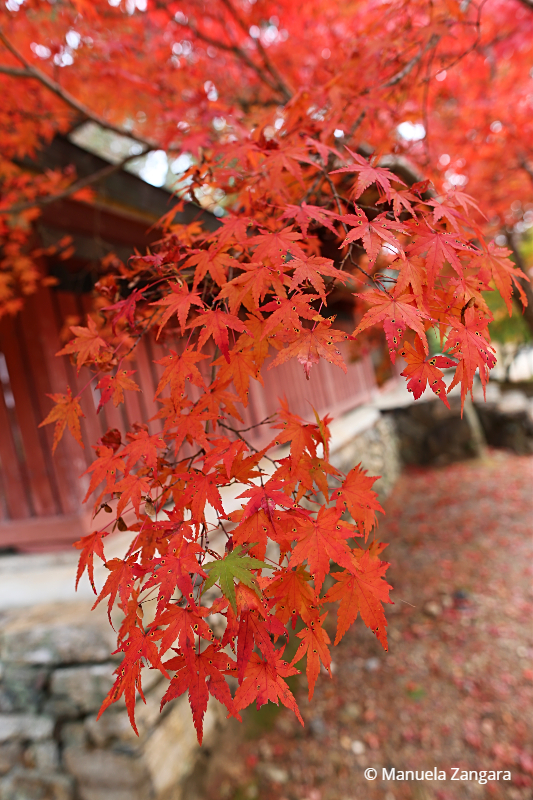
However, what we really wanted to do was the hike between Takao and Kiyotaki, which is amazingly beautiful in autumn. You could easily get all the way to Arashiyama (at least to the Saga Toriimoto area), but we decided to stop in Kiyotaki and leave Arashiyama to another day.

SIGHTSEEING
Kozanji Temple
Kozanji Temple dates back to 774 and is recognized as a World Heritage Site. Inside Kozanji, visitors can see what is considered Japan’s first manga, a scroll depicting animals in a satire of the court life of the Heian Period. Kozanji also claims to be the original site of tea cultivation in Japan. The original tea plantation has recently been restored for visitors to see.
Saimyoji Temple
Saimyoji Temple was originally built as a detached temple of Jingoji. It is not as big or impressive as Jingoji, but still interesting.
The vermilion covered Shigetsukyo Bridge, which leads over a river to the temple entrance, is a particularly well-known sight.
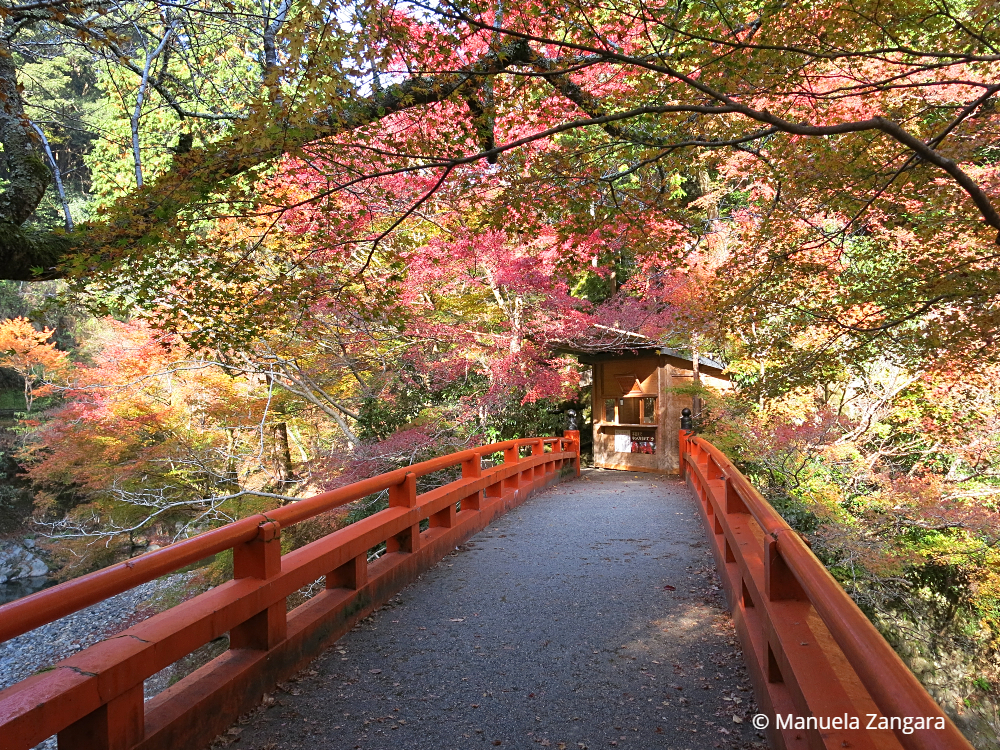
Jingoji Temple
Jingoji Temple is the most visited among Takao’s temples (and the only one we entered). A long set of stone stairs make for an impressive and tiring approach.

The temple grounds feature a large entrance gate and multiple halls, as well as a path to an observation point with views over the valley. At this observation point, you can buy small clay discs (kawarake) with inscriptions and throw them into the valley for good luck (see below for more details).

Takao to Kiyotaki Hike
The main reason why we went all the way to Takao though was to do the hike between Takao and Kiyotaki. It is a moderate walk (we did it with our kids) and I highly recommend doing it especially in autumn and spring. When we went, some parts had been seriously damaged by a typhoon and they were being repaired. So it wasn’t all as easy as it usually is and some parts were a bit slippery. Anyhow, by now it will all be fine.
To start the hike, backtrack just slightly from the Yamashiro-Takao bus stop toward the shops and vending machines. You will see a flight of steps marked by a sign pointing to Jingo-ji and Hiking Course. Take these steps down. At the bottom of the stairs, you will see the Kiyotaki-gawa river in front of you.
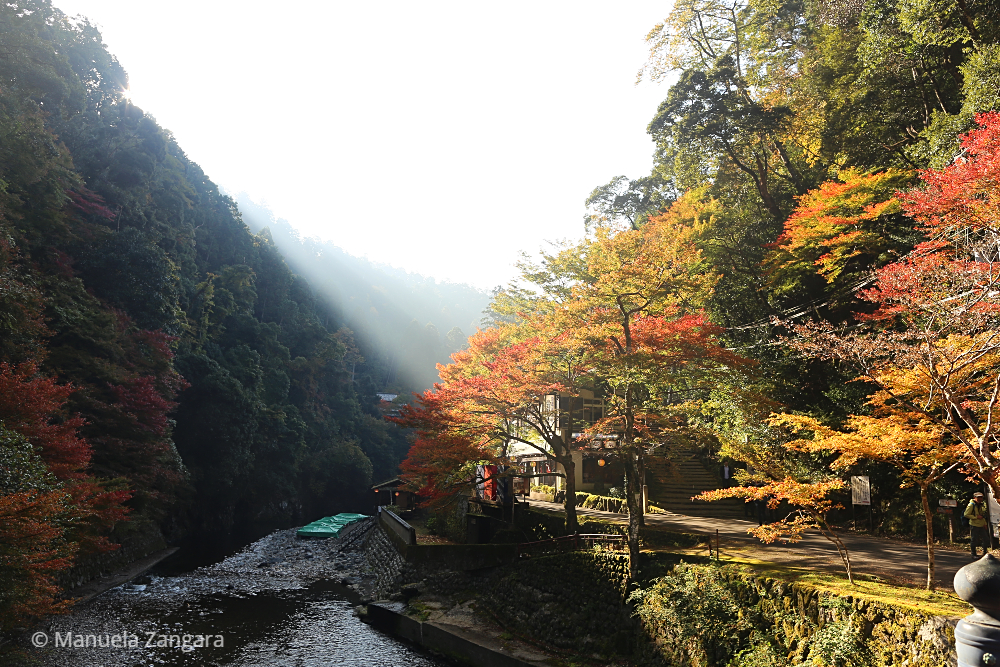

To go to Saimyo-ji Temple, don’t cross the bridge yet, but take a right on the road before the bridge and walk upstream, past some old restaurants and ryokan.
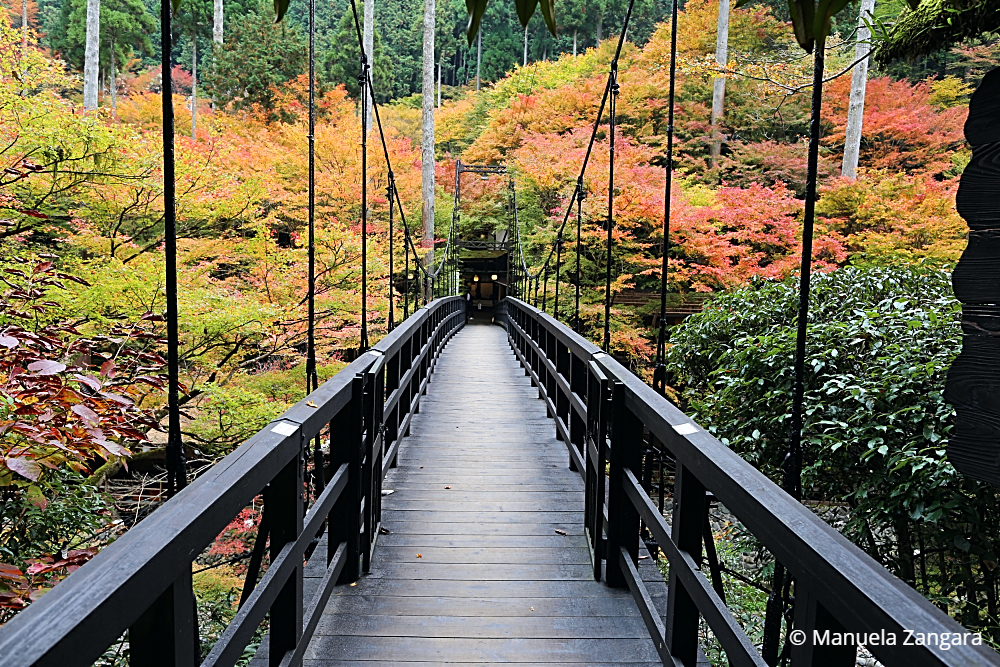
After about five minutes of walking, you will see a vermillion bridge across the river. Take this bridge to reach Saimyo-ji.

Now exit the temple and go back to the bridge at the bottom of the stairs. Cross the bridge this time and you will see on the other side of the bridge the start of the long steps that lead up to Jingo-ji Temple.


Climb the steps up to Jingo-ji. You will pass several teahouses and simple restaurants along the way. The climb to the main gate of Jingo-ji takes about 15 minutes. At the top of the steps, pay the Y600 fee to enter the temple and walk into the main precinct of the temple.

Walk straight into the temple and you will soon find a flight of steps on your right. Climb these to reach the main hall of the temple, the Kondo Hall.


After visiting the Kondo Hall, head down the steps and turn right. This is the start of the path to the next attraction in this temple, the kawarakenage spot. When you get there, you will see a small shop on your left. This is where you buy your kawarake.

Kawarake are small clay discs that you throw off the nearby cliff to rid yourself of bad karma. The act of throwing them is called “kawarakenage” (“nage” means “throw”).

You will see a fence at the edge of the cliff, overlooking the valley and the Kiyotaki-gawa. This is where you throw your kawarake. The trick is to hold them gently with the convex side up, like a frisbee. The further they go, the more bad karma they carry away.

Leave the temple the same way you came in and walk down the steps to the Kiyotaki-gawa. As soon as you get to the bottom, take a hard right, at the restaurant. Do NOT cross the bridge over the river. Walk along the road, with the river on your left and the restaurants on your right.


Walk for about ten minutes and when the road ends, you will see a bridge on your left, crossing the river. Cross this to the east side of the river.

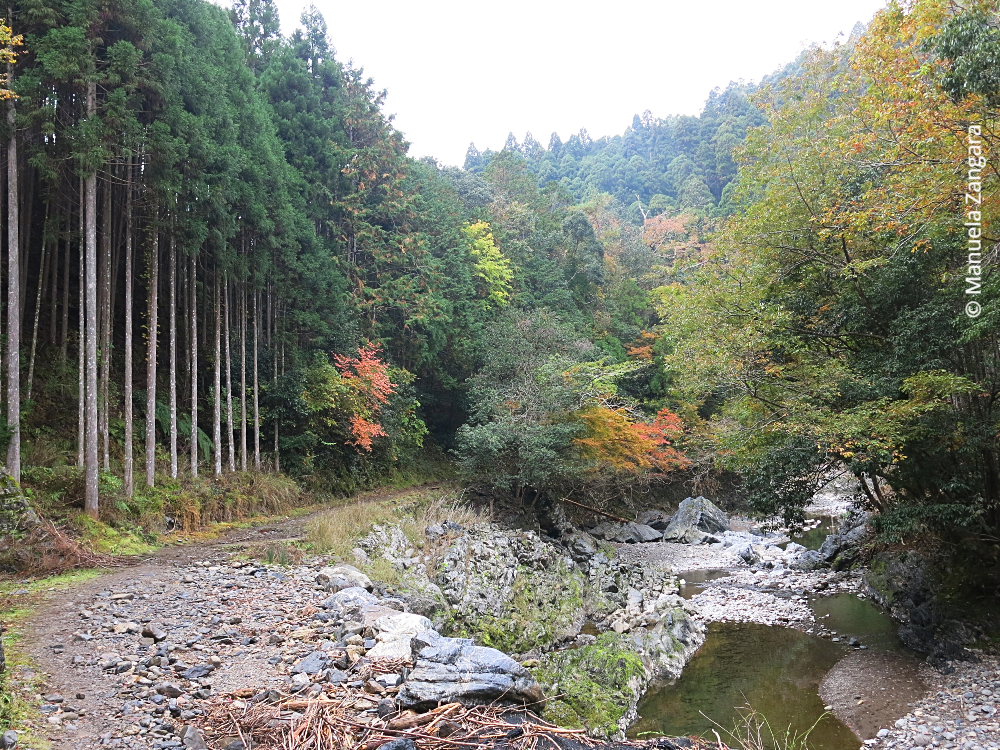
Continue downstream along the trail. As you might have guessed, you are now walking in the valley into which you were throwing the kawarake before. You will see plenty of kawarake in this part of the trail!


Keep walking and enjoy the view!
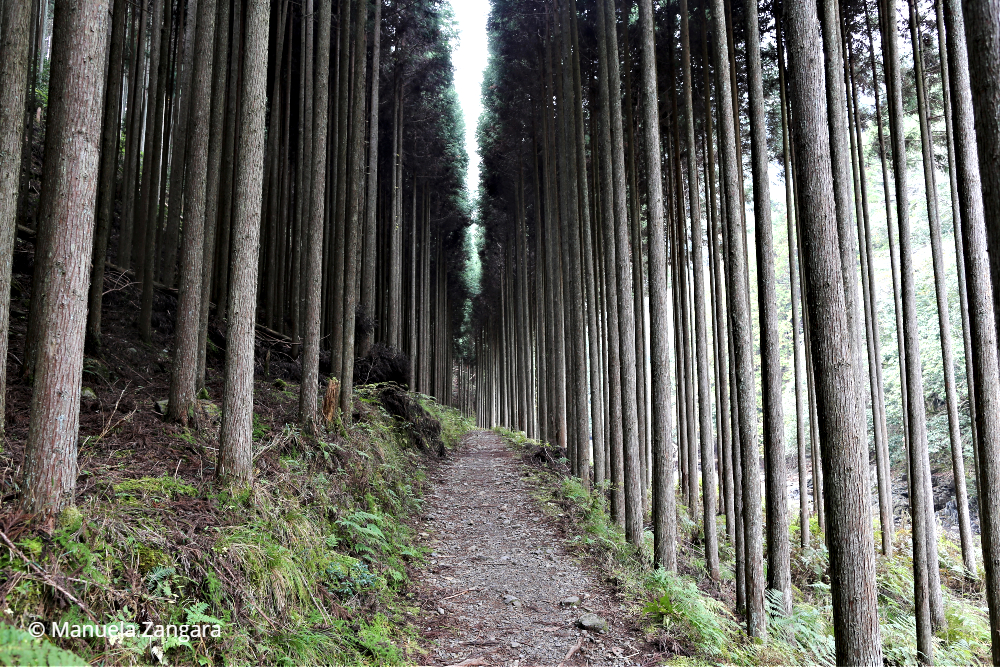

About 3.8km from the start, the trail descends to a bridge across the river. This is where we had our picnic lunch. The gravel bank of the river is a great place to eat while enjoying the view of the river.


There are also tables just across the bridge.


After lunch, continue down the trail, now on the west side of the river. This is a particularly scenic part of the trail.


Shortly before reaching the village of Kiyotaki, you will come to a short wooden bridge across a creek coming in from the right. Follow the trail above the bridge. You’ll soon come to a signpost that points to the left, indicating Kiyotaki. Walk in the direction indicated (to the right). You will soon reach an asphalt road. Just follow the road downhill, back toward the Kiyotaki-gawa and in the direction of Kiyotaki.

As soon as you reach the village, there is a junction, with a bridge on your left. If you cross the bridge, you will find a vending machine and a parking lot. To get back to Kyoto, cross the bridge and take a right at the parking lot.


The road past the parking lot will take you up to a bus stop (about five minutes’ walk) where you can catch a bus back into Kyoto.
ACCOMMODATION
We stayed in a rental house in Kyoto, check it out here.
HOW TO GET AROUND TAKAO
Definitely on foot!
RESOURCES ON MSM
RECIPES:
TRAVEL IN JAPAN:
Nara & Fushimi Inari guide – Japan
Haru Cooking Class Kyoto – Japan Guide
Nagashima and Nabana no Sato – Japan Guide
Jigokudani Monkey Park Guide – Japan
Miyajima Autumn 2018 – Japan Guide
Kunisaki Peninsula – Japan Guide
Don’t forget to pin this post!

HOW TO GET TO TAKAO FROM KYOTO
Takao is connected with central Kyoto by local JR buses and Kyoto City Bus.
JR buses for Takao (West JR Bus Takao – Keihoku Line) leave from Kyoto Station (Stand JR3) every 20 to 30 minutes, cost 520 yen one way, and should take 50 minutes to get to Takao. The bus can also be boarded at several stops along the way, including JR Nijo Station and Omuro Ninnaji bus stop. I would however recommend catching it from the station if you want to have a seat! The bus is covered by the Japan Rail Pass, JR Kansai Area Pass, JR Kansai Wide Area Pass and a few other rail passes by JR West, but it is not covered by the one-day pass for city buses.
Takao can also be reached by Kyoto City Bus number 8, which departs from Shijo Karasuma every 30 to 60 minutes, costs 520 yen one way, and should take 45 minutes. Because Takao is outside the flat fare zone of the Kyoto City Bus network, the one-day bus pass will not fully cover the fare.
All buses stop at Takao bus stop (高雄, known as Yamashiro-Takao 山城高雄 in case of JR buses), which is most convenient for accessing Jingoji and Saimyoji. While Kyoto City Buses terminate at Takao bus stop, JR buses continue to run deeper into the valley and two minutes later stop at Toganoo bus stop (栂ノ尾), which is most convenient for accessing Kozanji.
To get back to Kyoto from Kiyotaki, take Bus 94 (one every hour) to Saga-Shogakko Mae bus stop (9 stops). This bus is covered by the one-day pass for city buses. Catch a train to Kyoto Station from the Saga-Arashiyama (JR) train station.




















Leave a Reply